Vogue artist-in-residence Eduardo Enrique asks: “What is a fashion painting?”
25 February 2021
"Your perception of perfection can end up blocking you," Enrique, a Venezuelan mixed-media artist, says. Here, he talks to Vogue Singapore about creative responsibility and keeping things in perspective
Eduardo Enrique gets the picture. A Singapore-based contemporary mixed-media artist originally from Caracas, Enrique takes inspiration from figures like Barbara Kruger, René Magritte, and Jean-Michel Basquiat in order to create his work. Driven by a desire to spark social commentary, he uses slapdash spray paint and huge canvases to wake his audience up to the messages lying just underneath the surface of culture.
Enrique is an expert in sensing these messages. He’s spent the vast majority of his career in the commercial creative industry, “helping brands understand culture,” he explains, “so that what they do there feels genuine. So it doesn’t feel like a hard-sell.”
There’s a notable, genuine effortlessness to Enrique’s own work as an artist. He doesn’t sign his own artwork; his work is not about him, he says. He doesn’t offer explanations for what he creates; he likes his audience to come up with their own. Enrique hates it when, at a show, the artist is there, hovering in the corner and inviting conversation. He didn’t spend a lot of time at ‘New Painting,’ his own exhibition at The Substation, last November. He wanted people to be able to freely form their own connections—or lack thereof—to his work. “How can you bitch about the work if the artist is right there?” he asks, smiling.
Some of his works are almost confrontational in nature—NUDE MODEL IN AIR JORDANS, one painting from his 2020 exhibition, yells. In person, though, Enrique is soft-spoken. He takes long pauses, thoroughly mulling over all the possible permutations of his answer to a question. When he does, he gives long, thoughtful explanations of his artistic practice. The discipline it takes to create, consciously. Why he calls some of what he does ‘vandalism,’ but doesn’t call himself a street artist. Why you shouldn’t spend so long searching for your creative voice that you forget how to speak. Here, to Vogue Singapore, he proudly demonstrates his own voice, revealing the process behind his answer(s) to the question: What is a fashion painting?
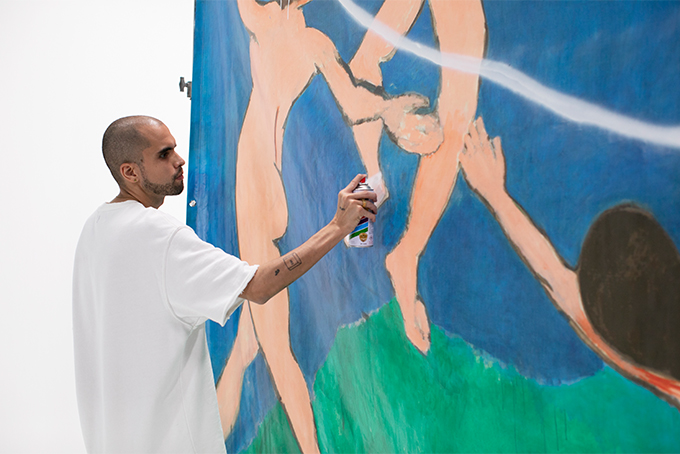
Can you talk a little bit about the central question of this series you’ve created for Vogue Singapore?
I gave myself a brief. My idea was that I was going to try to crack the idea of what a “fashion painting” is. Because we have fashion films, we have fashion photography. So what I did was to create an album to provide a few answers to this brief. The body of work is nine pieces. All of them try to answer the question in a different way. They’re all perfect. I don’t think the last one is better than the first one. They make up a roadmap, stretching out the idea of what makes a painting “fashion.”
So is each previous work a draft version of the subsequent one?
Not quite. They’re all finished products, that’s the thing. I couldn’t have made the third if I wouldn’t have made the second. I did the first and I was like, “No—what if instead it was this?” And that’s how the second came about. “What if it’s this?” And then the third came about. Until I felt I was done.
You mentioned earlier that you got an art scholarship to attend Parsons School of Design in New York. The love of—and the drive to—create must have started early for you, then.
Yeah, definitely. I think I was lucky to be in a family where there was a lot of creativity. Perhaps not in the traditional art sense, though. My mother was really into arts and crafts; she’d do all kinds of crafty things to support the family on the side. So as soon as I started drawing, I was always celebrated: “Oh, you draw so well,” and the rest of it. So my family fuelled my creative self. It just became a part of my identity from a very young age.



You grew up with your family in Venezuela. Did you feel supported as an artist outside your home, in the wider world?
Venezuela is a very conservative society. It reminds me a lot of Singapore, actually. It’s very international, but there’s an expectation: you’re going to be a lawyer, doctor, typical things like that. It’s a very rigid society. I wasn’t exposed to the art scene in Venezuela at 17 [years old]. I think it was really New York that shaped my world.
I’m not the kind of artist that really connects to his nationality. I’m not, for example, like a Chinese artist who’s doing paintings with fireworks. But there is this element of vandalism to my work—even for this project. “Vandalising” it, whether that was in a graffiti sense or otherwise. And that’s very Venezuelan. There’s so much street art, but it’s not the same as in New York. There’s no aesthetic concept. It’s really about messages, subversions. Like me; I’m not so concerned about the aesthetic of the technique. It’s more about the message.
It’s interesting that you would bring what might be considered a “criminal” kind of art to Singapore, which is such a law-and-order society.
Yeah, well. I’ve never actually done street art. I think people think of me as a street artist because there’s graffiti in my work. But I’ve never damaged any public space, you know? And I’m really against that. If somebody came to my place and f**ked with my walls, I’d be upset. For me, street art is about bringing art to the streets. It’s about impacting people and making them think differently.
Through creativity, you mean?
Creativity is funny. Our ideals of creativity can completely block our creativity. Think about it. I think that something is significant. And then because I can’t do it “well enough,” I don’t do it. These ideals of perfection that we have—they’re good because they push you forward, but they can block you if you’re not careful.
And creativity really is a process. [Pause] It’s a process of you finding something along the way. People think of creativity as an immaculate conception. Like, I don’t know, Picasso woke up one day and decided to be who he became. It’s not like that. Every masterpiece probably had a hundred versions made of it prior to that. So when you guys told me that the magazine’s theme was “Creativity,” my first idea was that I wanted to do an homage to the creative process. Not the final result.
Do you think people worship the idea of a “final result” too much?
Everybody loves the final result. Nobody sees the process behind the final result. For my last show [New Painting, The Substation, 2020], I did a body of work of around 160 works, and I only showed 15. And they were all perfect. I can’t say that one is worse than the other. They were all perfect at some point. It’s just that thing—you think to yourself, “Can it be better?” and sometime you push it further and you realise that, actually, five versions ago, that one was the one you wanted. So you go back again. It’s that search; it doesn’t just come out of nowhere.

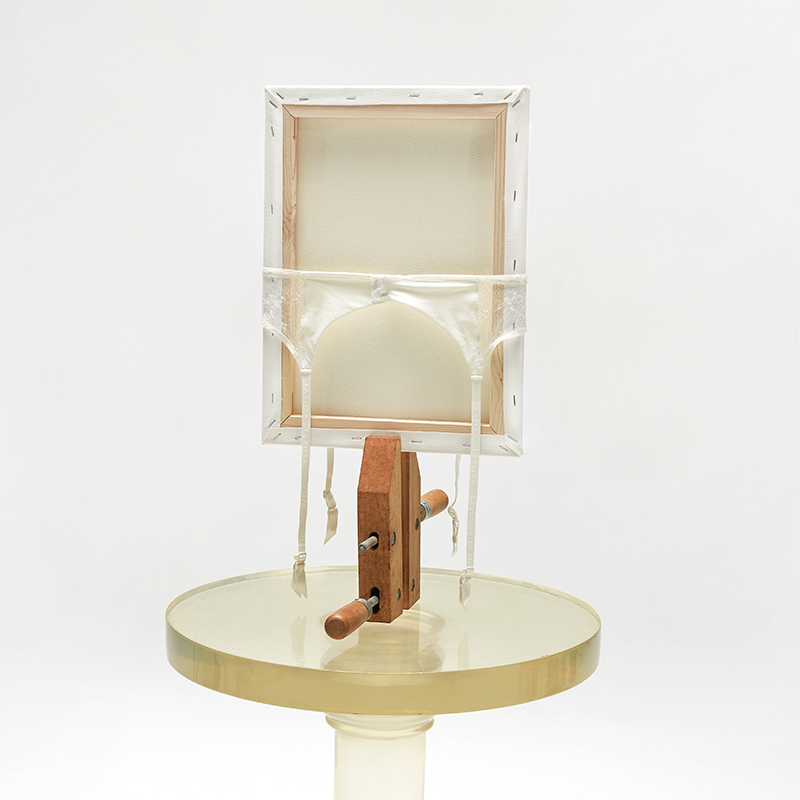

Does that search ever make you doubt yourself or your process?
Of course, of course. All the time. Self-doubt, it’s part of the process. You create something. Next day, you hate it. And then the odds are that after you hate what you make, then you hate yourself. Because it’s so connected to you.
I’ve talked to a lot of artists here about this. I go to them, and I ask, “What do you do when you start having these huge episodes of self-doubt?” And the advice of many of them is: “Don’t listen to yourself. Give yourself time to overcome that moment.” I think the moment that you are aware that, as a creative being, you will face some moments of self-doubt, then you can identify when it happens and then you can just take a break until it happens. And then you get back to work.
What about audience self-doubt? Do you ever see a barrier between art and people who dismiss it, as frivolous or impenetrable?
For sure. There were people, at shows I’ve done in the past, who wouldn’t even step into the gallery because they knew already that there was something there that they wouldn’t understand at all. How ridiculous is it that we have built up art to this point where people are sometimes too intimidated to step into a gallery? I have people tell me, “I’m going to go to your show, but just FYI, I’m not going to understand anything.” I’m like, “How can you know?” That’s my mantra for them. “How can you be so sure?”
How have you been pushing yourself most recently in your art?
It’s an interesting question. [Pause] Sorry. [Longer pause] In the sea of possibilities of what you can make, it’s very easy to get drunk on creativity. To start listening to every idea that comes into your head. To answer your question, I try to be very rigid in asking myself: Why am I making this? What’s the purpose? What am I bringing to the world? Why am I doing this in Singapore? Because creating art in Berlin is not the same as creating art in Singapore.
And as much as I consider myself an international artist, it’s very important you understand your context, so you can make the biggest possible impact. To remain true to your artistic intentions. Creativity’s a nonlinear process, and it can seduce you. Just because you can, doesn’t mean you should.
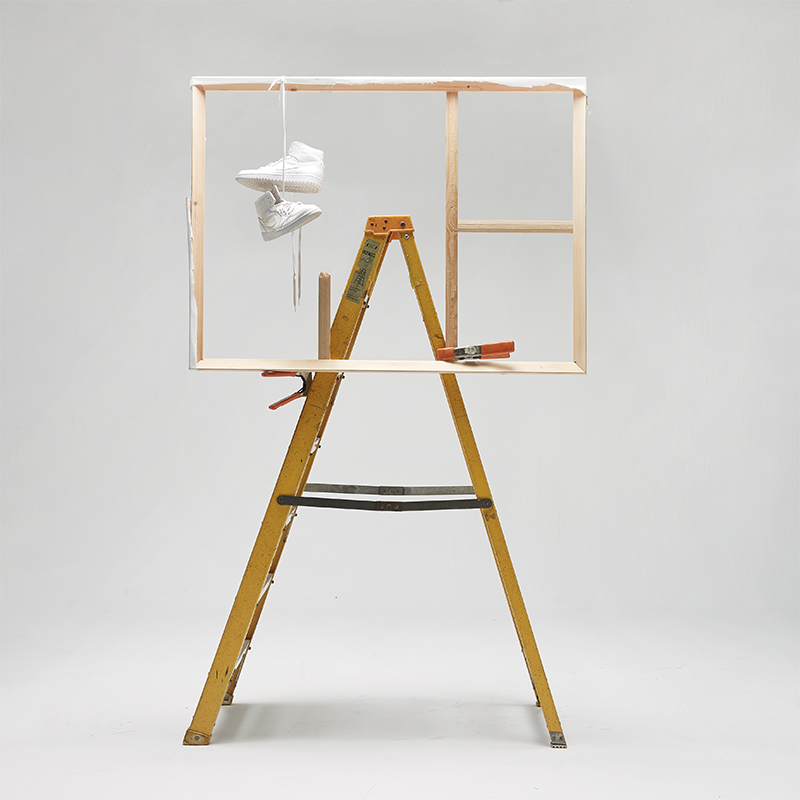
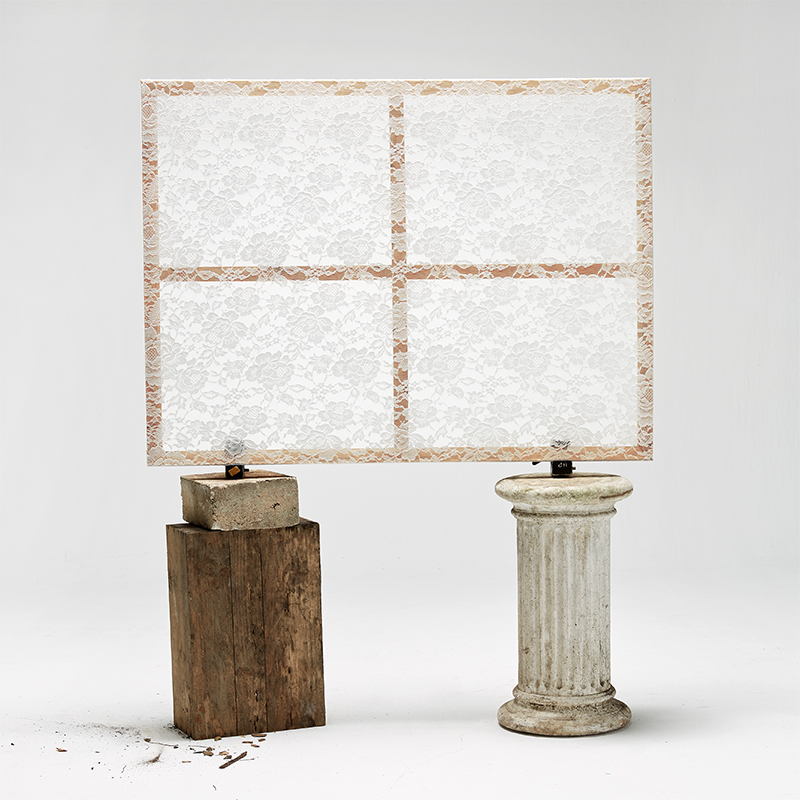
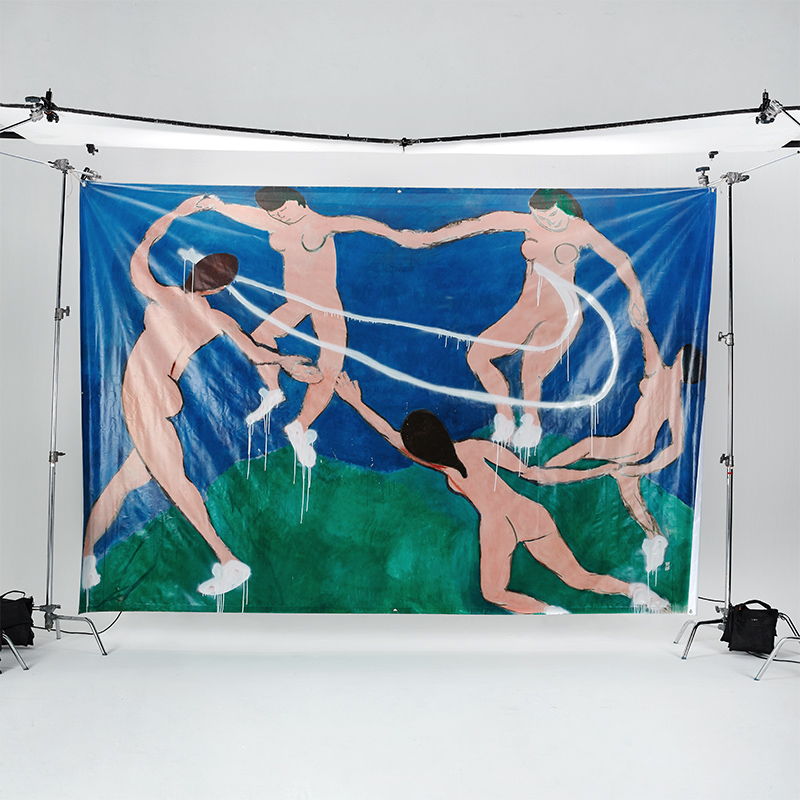
You came to Singapore five years ago. Did that have anything to do with the art you wanted to make at the time?
I came to stay with family. And then I just stayed. Artists here—we have to do a lot of work, building the foundations of what can be a great art scene. One that can compete with the art scenes that people compare Singapore to. [Sighs] It’s a very young arts scene… [Pause]
But we have the same responsibility as artists here that we would as artists anywhere else. To keep old ideas relevant. To make sure that certain ideas, ones that are necessary for us to understand the relationship between ourselves and society, are maintained and present. The world moves fast and it’s hard to keep history alive, if that makes sense. We have to be conscious about making space for beauty and new perspectives in the world.
Can you give me an example?
Like, for example, I work with a lot of Nike logos. I put “swooshes” into my work. If this were the 1950s, I’d probably be using Coca-Cola. If it were 2000, it would be Apple. But because it’s 2021, I feel like to talk about consumerism, you have to talk about Nike. And I’m a huge fan of Nike.
Really?
It’s not a critique, when I put these logos or brand names into my work. It’s a celebration. I’m a huge consumerist. I’m a huge consumerist. I have so many shoes. I only have two feet, but… Why do we have to choose? Why don’t we try and balance the spiritual and the material self? If that’s what you have to do to keep old ideas relevant, then that’s what we should do.
Read more about Vogue Singapore’s artists-in-residence.
Video credits
Editor-in-Chief: Norman Tan
Digital Creative Producer: Vanessa Caitlin
Videography: David Bay & Hazirah Rahim




